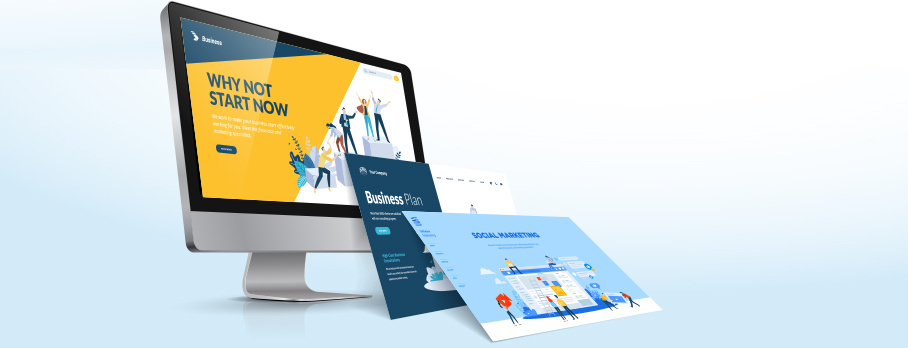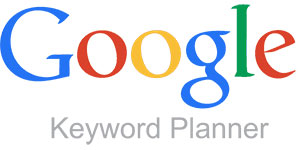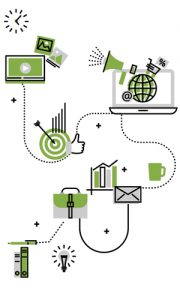Does your company want to improve B2B lead generation? Do you want to harness easy to implement digital techniques to drive new business leads into the hands of your sales team?
Then read on.
In this article we deliver digital lead generation advice for companies focussed on B2B.
Digital Lead Generation in B2B
First thing’s first.
B2B and B2C marketing differ in their respective strategies, as well as in their audiences and how they communicate to them.
B2B marketing targets the needs, interests, and challenges of individuals who are making purchases for their company (rather than for themselves), thus making the business the customer.
This has a direct impact on their motivations and purchasing cycle…
GOAL
B2B Marketing
Customers are focused on ROI, efficiency, and expertise.
B2C Marketing
Customers are seeking deals and entertainment.
PURCHASE MOTIVATION
B2B Marketing
Customers are driven by logic and financial incentive.
B2C Marketing
Customers are driven by emotion.
DRIVERS
B2B Marketing
Customers want to be educated (which is where B2B content marketing comes in).
B2C Marketing
Customers appreciate education but don’t always need it to make a purchase decision.
PURCHASE PROCESS
B2B Marketing
Customers may like to work with account managers.
B2C Marketing
Customers like to make purchases directly.
PEOPLE INVOLVED IN PURCHASE
B2B Marketing
Customers often have to involve others in the decision making process.
B2C Marketing
Customers rarely need to consult with others before making a purchase.
PURCHASE PURPOSE
B2B Marketing
Customers make purchases for long-term solutions, resulting in a longer sales cycle, longer contracts, and longer relationships with companies.
B2C Marketing
Customers may be more transactional in their approach. They aren’t necessarily looking for long-term solutions or long-term relationships.
Bear in mind, the number of people who play a role in the B2B buying process grows every year.
In fact, the Harvard Business Review reported,
“The number of people involved in B2B solutions purchases has climbed from an average of 5.4 two years ago to 6.8 today.”
The B2B Buyers’ Journey
Before diving in, make sure you understand the B2B buyer’s journey.
When conducting their research, a typical B2B buyer will go through 3 stages before completing an enquiry form or picking up the phone. Take note of how each of these stages may affect your marketing strategies and how you implement them.
9 Steps to B2B Lead Generation Strategy Success
According to a report by Forrester, 68% of B2B customers prefer to research independently online.
So it’s essential your digital presence is strong.
Let’s walk through a handful of tactics that can strengthen your B2B digital marketing strategy.
1. Define and Understand your Target Audience
A strong B2B digital marketing strategy starts with defining your target audience, or buyer persona. This demographic and psychographic information will inform almost every other marketing activity thereafter.
It will ensure your digital material is absorbed by the right eyes and ears (and that no resources go to waste on your end).
It will help you hone relevant and appealing messages.
And it will help you to help your buyer!
2. Craft a Lead Generative Strategy
It’s essential that you document your strategy and check back in on your progress throughout the course of the year.
You can do this through a robust marketing plan, which should include:
- Competitor analysis
- SWOT and PESTLE
- Customer Research and profiling
- Product Development
- Target Markets
- Communications Plan with:
– Inbound lead generation boosting techniques
– Digital optimisation
– Outbound techniques
– Brand awareness boosting exercises - Full Costings and ROI
For more details on how to develop a lead generative marketing strategy, click here.
3. Set your Benchmarks
Before embarking on any activity, you need to put in place the means to measure success.
Oh and learn from mistakes of course!
No marketing activity will be perfect on first attempt. So be sure to have all the tracking in place to learn and grow as the year unfolds.
Consider how you plan to track campaign return. Ensure you have all the tracking pixels and code uploaded from the outset.
Then be sure that you can track inbound leads end-to-end.
- What was the source of the lead?
- What happened once the lead came in?
- How long did it take to convert?
- How many additional activities were needed to do so?
- What areas did you see particular successes?
- Where did you get good traction vs poor uptake?
Once you’re confident that you can keep a close eye on leads as they arrive, then you can progress.

4. Optimise your Digital Presence
Digital marketing can’t function without an informative, engaging website.
Over 80% of buyers visit a website before making a purchase.
Moreover, since the typical B2B sales cycle often involves many key players (such as gatekeepers, decision makers, and other folks who have to buy into a purchase), websites are easy, straightforward ways for influencers to share information about your product or service.
But your website needs to be more than informative and engaging.
It also needs to be discoverable.
You can do this with on-page SEO and technical SEO tactics. These include everything from image alt-text and meta descriptions to structured data and site speed.
Off-page SEO is also at play here.
This refers to external linking strategies and social sharing — SEO tactics that take place off your website.
5. Remove any obstacles
We’re constantly amazed at the number of B2B companies that make it incredibly difficult for prospective clients to interact with them.
Remember, your clients may not want to jump right in to a telephone conversation with a ‘pushy salesperson’.
That’s why it’s essential to include multiple calls to action on your website. If you have the option to present an online demo, a video guide or a download of some kind, do so.
Harness the power of live chat and interactive walkthroughs, so users can get answers to their questions whilst browsing.
Encourage visitors to sign up to a mailing list.
That means, if you don’t convert them on the site this time, at least you can continue to market to them. But don’t ask for too many details. Users may be more comfortable interacting electronically than over the phone.
Always consider the users’ individual preferred communication method.
6. Harness the Power of Great Content
B2B customers digest multiple pieces of content before submitting an enquiry.
This could be landing pages, video interactions, downloadable guides, ppt presentation, blogs and more.
Great content builds authority.
It improves conversion rates.
It supports your SEO efforts too.
In short, content is still king. You can find out more on this page, or check out the video below for more ideas:
7. Incorporate Video
Video brings your expertise and proposition to life. It simplifies complex messages and builds a rapour with the viewer. Plus it’s the way your clients want to source their information.
70% of B2B buyers watch a video sometime during the buying process.
So, does your content plan include video assets?
8. Use Email Marketing
Unlike B2C customers who respond best to emotions and entertainment, B2B customers look for logic and positive ROI. Essentially, they’re asking themselves, “how can your business help my business grow?”
Because of this, your email marketing must consistently resonate with your business customers and focus on what matters to them.
Email marketing is also a powerful vehicle for sharing your brand’s content.
83% of B2B companies use email newsletters as part of their content marketing efforts.
With the constant barrage of emails flooding our inboxes, it’s more important than ever to create effective marketing emails.
Remember that not every email you send will be appropriate for everyone on your list. Your subscribers may be at different stages of the buyer’s journey or be seeking different solutions.
That’s where email list segmentation comes into play.
Some top tips for your email campaigns:
- Remember to write and experiment with enticing subject lines.
- Personalise the email wherever possible.
- Avoid confusion with too many calls to action – try to stick to just one or two.
- Play with different sender aliases and styles of email (HTML and plain text), to see what resonates with your target audience.
Oh and please ensure your email is responsive!
9. Bolster Leads with Digital Advertising
Seek out digital advertising opportunities on relevant, sector-specific online publications.
Online ads are expensive, so look for dual benefits.
Look for those that offer more than a simple skyscraper ad. Advertorials and guest blogs allow you to incorporate backlinks to your site, which will aid SEO.
Round out your digital presence with pay-per-click (PPC) advertising.
This allows you to get your brand in front of new audiences via search engines and other advertising platforms. We’d usually recommend maximising your PPC investment by advertising more than just your brand. Focus in on specific products or services, hero blogs or social media content and consider giving them a nudge with PPC.
The best way to see an ROI from your paid ads is by;
- Incorporating your buyer persona data.
- Boosting content that they can relate to.
For example, it’s highly unlikely a brand new consumer who’s never heard of you is searching for your exact product. They may be searching for a location-based solution or product feature. Focus your ads accordingly.
Once all that is covered, consider remarketing.
Remarketing is a technique used to continue to display digital ads to a prospect long after they have clicked away from your website or social fan page. This ensures that your brand remains front and centre over the following days and weeks, which can be particularly valuable given the long sales cycle typical in B2B.
Online chats are a great way to engage with B2B customers as they conduct their research. There are many online chat platforms out there. We find snapengage particularly flexible in its per user, per month pricing model, which allows you to add and remove users as needed. It also boasts a range of design customisation options, so you can make your chat box and buttons match your web design.
Having all your SEO tools in one place can be a blessing when trying to ensure your online presence is tiptop. HikeSEO provides a variety of website monitoring, analytics and SEO tools from one platform, and produces a range of recommendations to help you improve. This is important, as interpreting SEO data and translating that into actions can be
Tracking where your site ranks on search engines is essential to identifying gaps in your content production and SEO efforts. If you’ve got a beautiful website with highly engaging landing pages, but the site doesn’t rank for relevant key terms then all that effort will be wasted. Rankranger is one of many SEO monitoring tools, but we particularly like the intuitive interface and daily, weekly, monthly views of search rankings.
Want to know which companies have been snooping around your website? Enter Lead Forensics. This tool identifies the companies that visit your website by their IP address and maps that to head office contact details. It shows how they entered the site, what pages they viewed and how long each visitor spends on each page. What it can’t do is tell you the name of the individual that visited (wouldn’t that be nice!), but your telesales team should be able to take a best guess at the department they sit in by the content they viewed.
This is an essential starting point to identify the terms your B2B prospects use when googling solutions to a problem your product or service can fix. All too often companies get caught up in their own, industry-specific terminology, only to take one look at Google Keyword Planner and realise that their customers use a different term entirely! So before you embark on a programme of content production or a redesign of key landing pages, be sure to check the volumes of searches for your key terms on Keyword Planner.
Looking for more useful lead generative tools? Check out this blog on Mention.com for a few more.
Time to Define Your B2B Lead Generation Strategy
B2B lead generation techniques are ever-evolving.
Businesses selling products or services to other businesses have a lot to contend with, from lengthy sales cycles to constant competition from all angles.
To create a healthy sales pipeline, filled with leads that have come in via your website or other digital mediums it’s going to take time and focus. But the great thing is that the level you invest in demand generation is entirely up to you. Provided you follow the advice given here, we’re confident you’ll see a healthy return on any digital B2B marketing investment you make.





 Joanna Tracey
Joanna Tracey